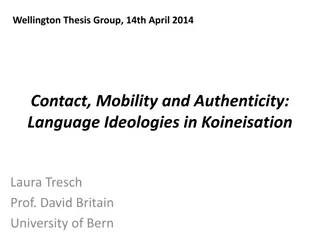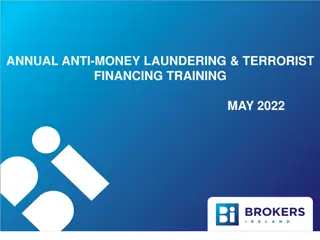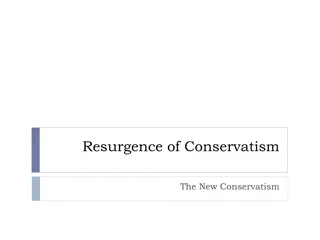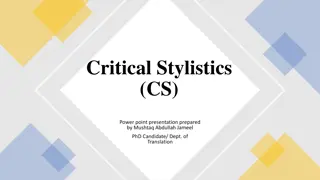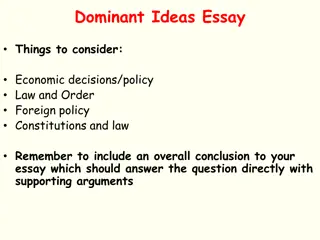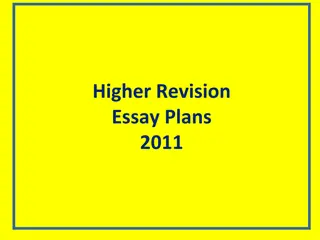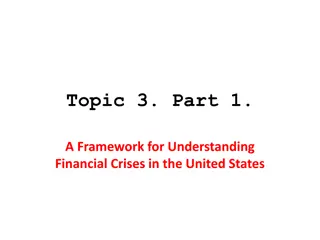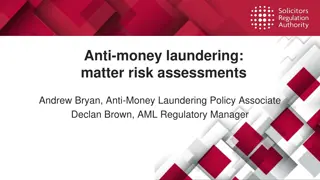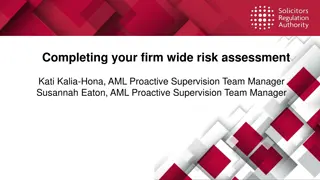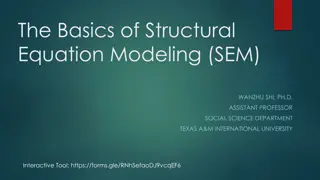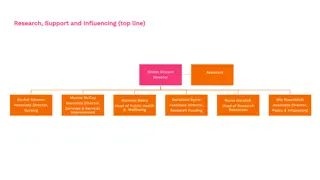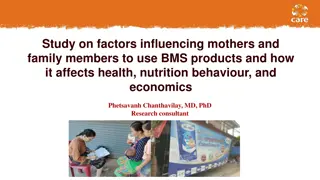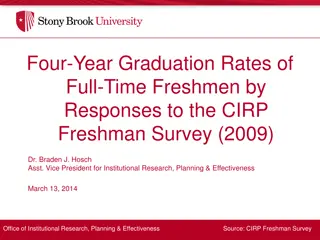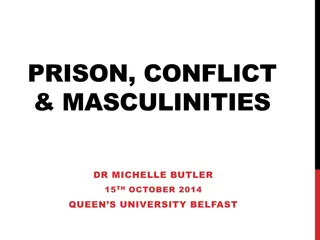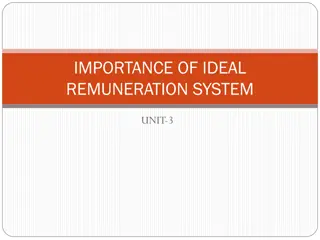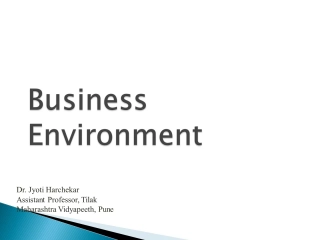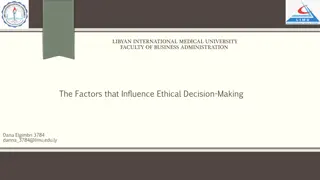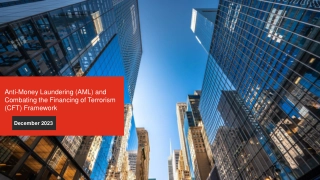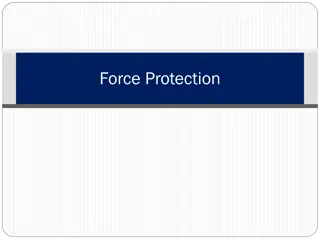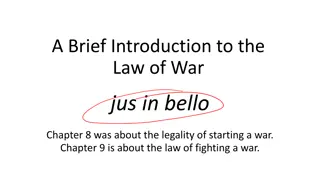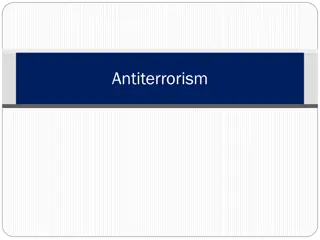Understanding Factors Influencing Support for Terrorist Ideologies
Staff members should possess knowledge on factors driving people towards terrorist ideologies. The Prevent Strategy aims to combat extremism and prevent individuals from engaging in terrorist activities through promoting partnerships and upholding British values. However, challenges such as lack of community consultation and trust issues persist in the implementation of Prevent. The Strategy also highlights the importance of detecting visible behavioral changes in university staff to prevent radicalization.
Download Presentation

Please find below an Image/Link to download the presentation.
The content on the website is provided AS IS for your information and personal use only. It may not be sold, licensed, or shared on other websites without obtaining consent from the author. Download presentation by click this link. If you encounter any issues during the download, it is possible that the publisher has removed the file from their server.
E N D
Presentation Transcript
We would expect appropriate members of staff to have an understanding of the factors that make people support terrorist ideologies or engage in terrorist-related activity.
Imran Awan Deputy Director (Centre for Applied Criminology) Books: Extremism, Counter-Terrorism and Policing (Ashgate 2013) Policing Cyber Threats and Cyber Terrorism (Ashgate 2012)
Prevent: Implications for Humanities and Social Science
Prevent has become a toxic brand and most Muslims are suspicious of what Prevent is doing.
The Prevent Strategy To tackle the ideological causes and challenges of terrorism. To prevent people from being drawn into terrorist-related activities. To promote partnerships between institutions working together to tackle the causes of extremism.
The Prevent Strategy Extremism Vocal or active opposition to fundamental British values, including democracy, the rule of law, individual liberty and mutual respect and tolerance of different faiths and beliefs. We also include in our definition of extremism calls for the death of members of our armed forces, whether in this country or overseas.
The Evidence Shared values and opposing violent extremism. Problem not community led. Lacking consultation. Constructing a suspect community.
The Evidence Counter Terrorism and Security Act 2015. Battle of ideas . What are British values? Statutory legal duty on the public sector. Universities and the wider public education sector. PROBLEMS TRUST
The Strategy Changes in behaviour and outlook may be visible to university staff.
The Strategy Must have the necessary staff training, IT policies and student welfare programmes to recognise these signs and respond appropriately .
The Strategy Due regard to the need to prevent people from being drawn into terrorism .
The Strategy Staff should have sufficient training to be able to recognise vulnerability to being drawn into terrorism, and be aware of what action to take to take in response. https://www.gov.uk/government/uploads/syste m/uploads/attachment_data/file/445916/Preve nt_Duty_Guidance_For_Higher_Education__E ngland__Wales_.pdf
The Strategy Universities will be expected to: Carry out a risk assessment. Assesses where and how their students might be at risk of being drawn into terrorism. No just violent extremism but also non-violent extremism.
The Strategy Institution s that identify a risk should develop a Prevent action plan. Actions that will mitigate this risk. Willing to undertake Prevent awareness training. Training to help prevent people from being drawn into terrorism.
The Strategy: In Action Safeguarding Approach. Troubling Behaviour. Awareness of vulnerabilities. Normal behaviour vs Troubling behaviour. Lonely. Isolated. Change of viewpoints.
The Strategy: In Action You have contact with students. Behaviour change. Attendance drops. Speak to the student WHY? Could be a bereavement. Not about looking for behaviour.
The Strategy: In Action Some people possess different types of behaviour. Andrew Ibrahim. Personality change. Leaflets. Nothing necessarily WRONG. Language used. Spoke to tutors and no one picked this up.
The Strategy: In Action NOTICE CHECK SHARE
The Strategy: In Action NOTICE (Issue/Something is WRONG). CHECK (Personal Tutor is concerned/Fb comment). SHARE (Refer to safeguarding officer).
The Strategy: In Action Channel Panel (LA/Police/Prison service etc). Individual follows this. MUST give CONSENT.
The Strategy: In Action Key Questions: How small is the risk? Are staff trained? DUE DILIGENCE. Resources, Needs and Support.
The Strategy: In Action Parents splitting up. Makes them vulnerable and angry. Family breakdown. External Factors. TV. Gaming. Social Media.
Rethinking Radicalisation PUSH FACTORS Anger. Frustration. Perceived injustice. Exclusion. Dissatisfaction.
Rethinking Radicalisation PULL FACTORS Identity. Belonging. Recruitment agents. Unity. Brotherhood.
EXAMPLE RISK POSTING EXTREMIST MATERIAL ONLINE Supporting comments University internal policy on social media Moderation. Workshops Rating RISK LEVEL 1-5.
External Speakers Free Speech debate. Within the Law. Should they be challenged. What topics will they cover. What has been put in place. What are they speaking about? A full transcript as evidence.
External Speakers Because after researching both her [Namazie] and her organisation, a number of flags have been raised. We have a duty of care to conduct a risk assessment for each speaker who wishes to come to campus.
Rethinking Radicalisation No single pathway. Non-linear process. Behavioural and environmental factors. Socio-economic and cultural factors do play a role.
In Practice The strategy is limited to providing communities with measures to help work together to challenge extremism . BUT does not expand on the methods required to help communities do so. http://www.bbc.co.uk/programmes/p02r8z20
Can Ministers define extremism?
PREVENT It is realistic to accept that some problems have arisen, notably from the feeling of some parts of the community that they have been victims of state snooping . Also, there has been some controversy about the extent to which the public sector should engage with possible extremists.
Children If a child draws a picture of bombs on there notebooks, that s potentially a cause for concern. 290 children reported in this manner. Identify and go through Channel. CASE Child presentation. Jamil Scott. State surveillance becomes abstract.
Reengaging Communities Young people must be empowered to engage politically in society. Safe spaces online and offline. Speak openly about there identity and belonging. The impact of racism, victimisation and Islamophobia. Policing and Prevent. Reinforcing messages through the Fire Service. Rule of Law, Democracy and Liberty.
The Way Forward Create an open and safe virtual environment. Positive connotations and role models required. Equipping young people with skills. Empowering local communities. Promoting free speech and creating a safe space for dialogue. Develop interventions that seek to change behaviour.
Reengaging Communities This is a PROBLEM for all COMMUNITIES. Includes far-right violence. Public sector workers are NOT counter- terrorism officers. PREVENT should be independent. The interpretation of Islam should be a matter for MUSLIMS.
Reengaging Communities Young people must be empowered to engage politically in society. Safe spaces online and offline. Speak openly about there identity and belonging. The impact of racism, victimisation and Islamophobia. Policing and Prevent. Reinforcing messages through the Fire Service. Rule of Law, Democracy and Liberty.
PROMOTE Have a shared language. A deep-rooted sense of our history; both the good and bad chapters. Support and create the spaces, places and opportunities for people to come together. British values are inclusive, not exclusive. We live by the British values we define.
Building Resilience Challenge extremist beliefs. Disrupt those who promote violent extremism. Support individuals who are vulnerable to recruitment by violent extremists. Increase resilience of communities to engage with and resist violent extremists. Effectively deal with grievances.



